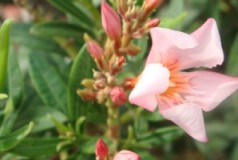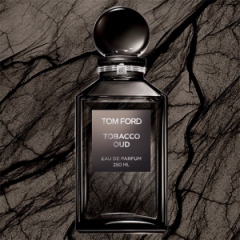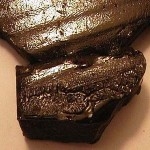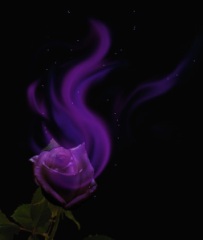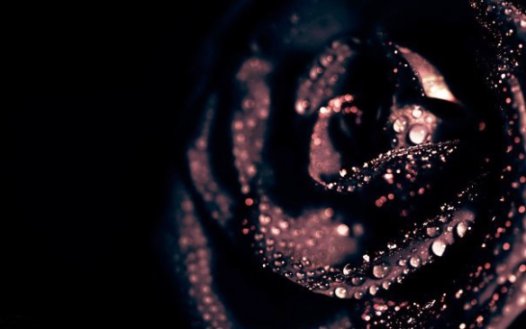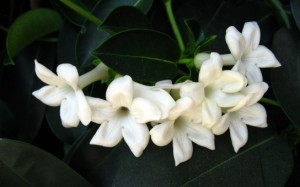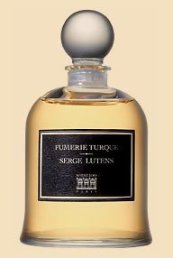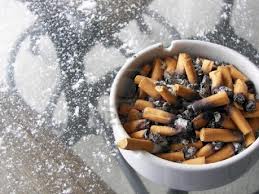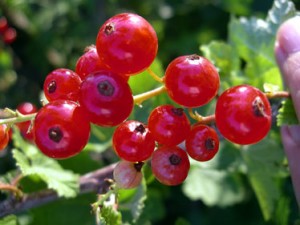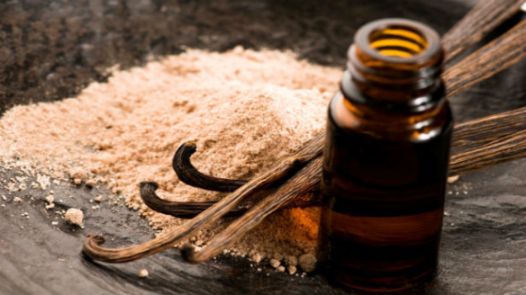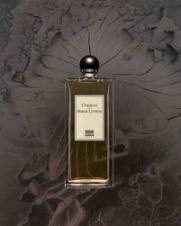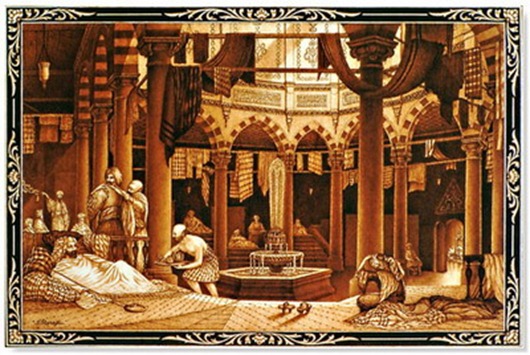Tom Ford recently came out with Oud Fleur and Tobacco Oud, two new agarwood fragrances to join his original Oud Wood perfume. The latter has only been re-packaged into a new bottle to match its baby siblings and has not changed. As a result, this review will focus simply on Oud Fleur and Tobacco Oud.
OUD FLEUR:
According to CaFleureBon, Oud Fleur was created by Yann Vasnier of Givaudan who has made a number of fragrances for Tom Ford. The perfume’s notes on Fragrantica are extremely limited:
rose, patchouli, agarwood (oud), sandalwood and resins.
I tried Oud Fleur twice, and I realised mere minutes into my first test that half of the things I was scribbling on my notepad weren’t on that list. From cardamom to ginger, apricot-y osmanthus, and more, the notes I detected didn’t match up with Fragrantica’s bare bones description. So I did some digging, and I found a much more substantial list at The Moodie Report which is presumably quoting a Tom Ford Press release. It describes Oud Fleur as follows:
Private Blend Oud Fleur is composed around an oud wood core, amplified with additional woody notes: patchouli, sandalwood, incense, styrax, cistus, a leather accord, ambergris and castoreum.
The Middle East’s Damascus Rose heritage is evoked with a blend of Rose Bulgaria ORPUR, Rose Absolute Morocco and Rose Absolute Turkey ORPUR, said to combine fresh petal, nectar and stem-like scent signatures.
This floral heart is enhanced with ginger CO2, cardamom seed oil ORPUR, cinnamon bark Laos ORPUR and pimento berry. The composition is completed with a touch of Geranium Egypt ORPUR, tagette, osmanthus, davana oil and a date accord.
So, the succinct list of notes would be:
pimento, cinnamon, cardamom, ginger, three different types of rose absolutes, geranium, tagette, osmanthus, davana oil, a date accord, patchouli, sandalwood, incense, styrax, cistus [labdanum amber], a leather accord, ambergris and castoreum.
A few words about the ingredients on that list and in the Moodie press release, as they may not be familiar to everyone. “ORPUR” seems to be the name given by Givaudan, the fragrance aroma and ingredients giant, to its ultra, high-end “pure naturals.” Osmanthus is an Asian flower whose aroma can be like that of apricots, tea, and/or limpid, dewy, light florals.
Davana is an Indian flower whose aroma is very creamy, rich, and heady with a subtext of apricots and fruit as well. Tagette or tagete is the name of plant in the marigold family that has an odor which is “sweet, fruity and almost citrus-like.” Some sources say that, depending on type, tagette oil can be a little musky, pungent and sharp with herbaceous notes that soon turn into something very fruited, almost like green apples. As for castoreum, I’ll spare you what it is, but its aroma is animalic, very leathery and a bit sharp. On occasion, it will have a slightly civet-like urinous edge that often turns into something deeper, more rounded, sensuous, and musky. Tiny amounts are often added to non-leather fragrances to provide a plush, velvety, rich brownness in the base, and a bit of subtle “skank.” Finally, on a more familiar note, pimento is simply another name for a type of spicy red chili pepper.
As always with Tom Ford fragrances, the amount you apply impacts the notes that you detect, their prominence, and their forcefulness. In addition, the potency of many Private Blend fragrances means tha it’s better starting off with a lesser amount. As a result, the first time I tried Oud Fleur, I only applied about 2 really giant smears, or about 1.5 sprays. It made the expected difference to the notes in the opening hour. Oud Fleur started with a much more creamy, mellow, soft aroma that was primarily a dewy, pale rose infused with fruited elements and strewn lightly with spices over a very creamy, sweetened wood base. Everything was creamy and soft. There was even a subtle whiff of a very creamy saffron note like an Indian rice pudding dessert lightly sprinkled with cardamom. The rose flits in and out of the top notes, while the patchouli works from the base to add a subtle touch of fruited sweetness. There was just the merest, faintest suggestion of something leathered, dark, and chewy underneath, but Oud Fleur’s main composition was of very creamy woods.
It was one of my favorite parts of the perfume. With a minimal quantity, Oud Fleur’s opening stage somehow consisted of a sandalwood-like fragrance more than an oud one. It never feels like actual Mysore sandalwood, but the impression of something similar has been created through subtle augmentation via the spices and resins. It boosts what feels like a rather generic “sandalwood” base into something very much like the real thing with its spiced, slightly smoked, sweet, golden-red aroma. It’s all largely thanks to that cardamom note with the subtle saffron-like element (which probably stems from the pimento). The final result for Oud Fleur’s first hour is a fragrance that is a lovely, delicate blend of creamy woodiness with sweet, dusty spices and a subtle sprinkling of light rose petals. It’s all incredibly sheer and seems to positively evaporate from my skin within minutes.
The second time I tested Oud Fleur, however, I applied about 4 massive smears which would be the equivalent of 3 small sprays, and the perfume’s opening hour was substantially different and much more spicy. Oud Fleur began with a blast of ginger, vanilla, rose, patchouli, amorphous, vague woodiness, and a hint of slightly skanky, animalic leather. The leathery element disappeared within seconds, but the somewhat urinous, feline or civet-like edge of the castoreum hovered about for another minute before it, too, vanished. Sweet florals quickly took their place, from the ginger-infused osmanthus to the creamy davana with its fruited apricot overtones. There was a hint of light spice from the sandalwood, then heaps more from a heavy, rich dose of nutty, dry cardamom.
With a much bigger application, the ginger came to the foreground, but Oud Fleur’s opening hours were also heavily dominated by the pimento which was completely nonexistent during my first test. It added a fiery kick to the fragrance, feeling precisely like the sort of peppered heat of a red chili pepper. The larger application also brought significantly greater definition to the floral notes. Before, Oud Fleur was primarily a creamy wood fragrance that was initially dominated by a dewy, pale rose with some fruitedness, cardamom, and some other vaguely osmanthus-like elements. The second time, however, Oud Fleur opened mainly as fruity-floral fragrance with heavy amounts of chili and ginger, and a lot of the davana flower’s apricot-floral overtones. There was no real incense, and the woody notes were largely overwhelmed.
 An hour into Oud Fleur’s development, the perfume’s main bouquet is of: sharp, biting pimento; dusty, sharp ginger; creamy davana apricots; floral, apricot-y osmanthus; and a heavy burst of rose. There are slight touches of incense and oud, but little sandalwood or leather. The rose alternates between being jammy and fruited (as a result of the patchouli and other accords), and being dewy, pale, soft and fresh. It also waxes and wanes in prominence, like a small wave hitting Oud Wood’s creamy shores before retreating. On occasion, it’s also supplemented by some greenness from the geranium.
An hour into Oud Fleur’s development, the perfume’s main bouquet is of: sharp, biting pimento; dusty, sharp ginger; creamy davana apricots; floral, apricot-y osmanthus; and a heavy burst of rose. There are slight touches of incense and oud, but little sandalwood or leather. The rose alternates between being jammy and fruited (as a result of the patchouli and other accords), and being dewy, pale, soft and fresh. It also waxes and wanes in prominence, like a small wave hitting Oud Wood’s creamy shores before retreating. On occasion, it’s also supplemented by some greenness from the geranium.
By the middle of the second hour, Oud Fleur smells like a creamy, almost custardy, almost mousse-y, airy flan infused with slightly burning spikes of chili pepper, then covered with a blanket of lightly sweetened, fruited flowers. The notes have blurred into each other, the fragrance feels increasingly soft, and hovers just an inch above the skin.
If you’ll notice, I haven’t mentioned oud or agarwood in either of my descriptions of Oud Fleur’s opening stage. There’s a reason for that. In both tests, the oud lurked completely at the fragrance’s edges, popping up like a ghost once in a while to give a little animalic “Boo” in the softest of whispers. On occasion, it took on a more musky, leathered feel (thanks to the castoreum and leather accords); at other times, it was more sweet, seeming like Indian oud instead of the Laotian kind on the list. Actually, to be honest, this doesn’t seem like real agarwood at all. It feels more synthetic than real, and it’s certainly not profoundly woody, deep, or dominant. In all cases, however, the note is really like Casper the Friendly Ghost throughout the majority of Oud Fleur’s lifespan. This is an “oud” perfume for people who actually dislike or struggle with oud.

“Cosmic Swirls Beige” by Jeannie Atwater &Jordan Allen at fineartamerica.com http://fineartamerica.com/featured/cosmic-swirls-beige-jeannie-atwater-jordan-allen.html
The differences in the two openings really lasts about two to three hours at most, and then the two roads of Oud Fleur merge into one. Basically, the second, more robust, spiced version of Oud Fleur takes on the soft, gauzy, creamy woodiness of the first version. It merely takes three hours, instead of just under two hours, for Oud Fleur to turn into a creamy flan-like bouquet infused with slightly fruited florals, abstract beige woodiness, the smallest flecks of oud, a tinge of incense, and some amber. Eventually, the floral elements fade away, leaving a generic, indistinct creamy woodiness with a hint of amber and some tonka vanilla. In its final moments, Oud Fleur is a nebulous smear of woods with a tinge of powdered sweetness.
Oud Fleur has decent longevity and low sillage on my skin. With 2 big smears, the perfume opened very softly, became a skin scent after about 90 minutes, and lasted a total of 7.75 hours. With 4 very big smears, Oud Fleur opened with moderate sillage that projected about 3 inches, then dropped after 2 hours to hover just an inch above the skin. It became a skin scent at the start of the 4th hour, and remained as a sheer, gauzy wisp for several more hours. All in all, it lasted just a little over 9.25 hours.

Oud wood with its “noble rot.” Source: The Perfume Shrine via Dr. Robert Blanchette, University of Minnesota – forestpathology.coafes.umn.edu
I think Oud Fleur is a pretty, pleasant fragrance that has some wonderful creamy bits and can be quite lovely at times. It is more complicated than a simple, small application would lead you to believe, and veers from being sweet, sexy and feminine, to being quite cozy in an elegant manner. However, at heart, it’s really a misnamed fragrance that is more a light fruity-floral with spices and some generic woods than an actual oud fragrance. If I’m to be honest, I think Oud Fleur is very pretty, but somewhat over-priced for a fragrance that isn’t very distinctive. I also think those expecting a true agarwood perfume, or something with the heavy, woody richness of Oud Wood will be sorely disappointed. The same applies to anyone seeking a very masculine or true oud. This is not Xerjoff or Amouage territory!
On the other hand, those who liked By Kilian‘s Playing with the Devil (In The Garden of Good and Evil) would probably like Oud Fleur quite a bit. For me, Tom Ford accomplished what Kilian Hennessey failed to do, creating a fruity-floral with a bit of a fiery, spicy bite (the Devil) that turns into soft, creamy, floral woodiness (Goodness in the Garden). By the same token, women who enjoy soft fruity-florals and don’t like oud may greatly enjoy Oud Fleur. Men who are looking for a more woody twist on creamy florals with some cozy sweetness in the base may feel the same way.
TOBACCO OUD:
Tobacco Oud is a fragrance that mimicked a wide range of many existing Tom Ford fragrances on my skin. I kid you not, Tobacco Oud had parts that were extremely similar to four different Tom Ford Private Blends. In order: Amber Absolute, Tobacco Vanille, Café Rose, Sahara Noir, then back to Amber Absolute in the drydown. Make of that what you will when you contemplate Tobacco Oud’s originality….
According to CaFleureBon, Tobacco Oud was created by Olivier Gillotin of Givaudan who made Tobacco Vanille for Tom Ford. The Moodie Report describes the fragrance and its notes as follows:
As its name suggests, Private Blend Tobacco Oud features a tobacco accord inspired by “dokha,” a blend of herbs, flowers and spice-laden tobacco that was smoked in secret five centuries ago during a ban on smoking — and retains its allure as a widely used tobacco today.
Other key ingredients include roasted Tonka organic absolute, coumarin, sandalwood, amber, cistus oil, cistus absolute, cedarwood Atlas ORPUR, patchouli and castoreum.
So, a succinct summary of notes would be:
A ‘Dokha’ Tobacco accord, herbs, coumarin, flowers, Tonka bean absolute, sandalwood, cistus [labdanum amber] oil, cistus [labdanum amber] absolute, oud, amber, cedarwood, patchouli, and castoreum.
Tobacco Oud opens on my skin with a burst of amber and labdanum, then hints of tobacco and oud. For those of you who may mistake the two, labdanum and amber have very different smells. As one perfume nose told me in her studio, labdanum is “real amber,” while “amber” is often the compilation of various other notes to create that overall impression. Labdanum has a very particular, completely unique aroma that is dark, slightly dirty, very nutty and toffee’d with subtle, underlying nuances of honey, beeswax, musk, and/or something a bit leathery. It is almost always a deeper, richer, denser, stronger, darker aroma that is less soft, creamy, and cuddly than regular, lighter “amber.”
All of this is key, because labdanum is really at the heart of Tobacco Oud, as well as its forbearer, the now discontinued, labdanum monster, Amber Absolute, and Amber Absolute’s extremely similar replacement, Sahara Noir. On my skin, Tobacco Oud opens exactly like Amber Absolute, with hints of Tobacco Vanille. That last part can’t be very surprising given that the same perfumer also made this new tobacco fragrance.
After the opening burst of labdanum, other elements emerge. Joining the tobacco in second place is patchouli, adding a subtle jamminess and additional layer of sweetness to the scent. Bringing up the rear are hints of: vanilla; a smoky, very dry, very brittle cedar; a whisper of oud; and a subtle flicker of something vaguely herbal that is too faint to really place. Tobacco Oud’s main, overall bouquet is of a nutty, dirty, dark, rich, labdanum toffee infused with a fruited pipe tobacco, a jammy sweetness, strong cedar, and a hint of vanilla. The perfume is initially rich and strong in its potency, but it’s far from being dense, opaque, or thick in feel. Actually, it feels much airier than the heavy Amber Absolute, even from the start.
Ten minutes in, other nuances appear under the top notes. There is a whiff of something floral, something almost rose-like, but it’s very minor at first. Much more noticeable is the subtle aroma of burnt beeswax, along with the merest suggestion of a darkened leather coated with honey. Both are side-effects of the labdanum. My skin tends to amplify the note, but it also makes patchouli act like a bullhorn a lot of the times, and Tobacco Oud is no exception. It takes the patchouli and runs with it, bringing out a definite syrupy, fruited, almost fruit-chouli like sweetness. Less than 30 minutes into Tobacco Oud’s development, the patchouli merges into the floral note to create a jammy rose sweetness that completely overwhelms the tobacco. I’ll be honest, I was a bit baffled, but, clearly, it’s the patchouli at play and, as usual, my skin wreaks havoc with it.
As the notes begin to blur into each other and overlap, Tobacco Oud turns into a labdanum, patchouli, and sweetened rose fragrance on my skin with only the vaguest suggestion of tobacco, oud, incense smoke, or cedar. Around the 75-minute mark, Tobacco Oud’s projection drops, the notes become even softer, and the fragrance loses most of its tobacco layer. The jamminess of the rose mixed with the dark labdanum amber creates something that, on my skin, distinctly resembles portions of Tom Ford’s Café Rose.
As regular readers will know, I’m not a fan of jammy, fruit-chouli, so it’s a huge relief when it fades by the end of the second hour and Tobacco Oud changes again. Now, it’s a gauzy, sheer, relatively dry-ish amber infused with frankincense and the merest flicker of oud. In short, the third hour opens in Sahara Noir territory, only Tobacco Oud is substantially thinner and weaker in feel. As the review linked above makes clear, I found Sahara Noir itself to be a copy of Amber Absolute, only much better balanced and less bullying, but somewhat lighter, less unctuous, without quite so much frankincense intensity, and with the new (but subtle) addition of oud.
So, really, Tobacco Oud has really returned cycled back to the beginning. The main difference is in density, thickness, projection and dryness. Tobacco Oud seems much drier than Amber Absolute, much less opaque, resinous, indulgently dense and gooey in its labdanum. It’s weaker in both weight and sillage, hovering just an inch above the skin at the middle of the third hour. To me, Tobacco Oud is actually much less smoky or incense-heavy than either Sahara Noir or Amber Absolute. Yet, it also feels dryer, probably because the labdanum isn’t such a heavy, rich layer.
Tobacco Oud continues to devolve, reflecting neither of its namesake elements in any noticeable way. Near the end of the 4th hour, it loses the remainder of its incense, turning into a scent that is primarily gauzy, wispy labdanum with a hint of nebulous woody dryness that can just vaguely, barely, be made out as “oud.” Even that goes by the end of the 6th hour. From that pointon, until Tobacco Oud’s final moments, the perfume is a mere smear of soft amber. All in all, it lasted 9.5 hours on my skin with generally low sillage after the third hour.
People’s reactions to Tobacco Oud seem highly mixed, and generally much less enthusiastic than the response to Oud Fleur. On Fragrantica, almost all the talk about Tobacco Oud centers on just how much of those two namesake notes are in the scent, and the degree of similarity it shares to Amber Absolute. A number of people find the two perfumes to be very similar in their opening stage, but dissimilar in overall development, weight, and feel. A few find zero similarity, no doubt because they experienced a heavy amount of tobacco. (Oddly, a number of those bring up Sahara Noir instead.) Obviously, the more the tobacco element manifests itself on your skin, the less you’re likely to think Tobacco Oud resembles Amber Absolute.
To give you an idea of the debate and divergence in opinion, here are some snippets from Fragrantica:
- Tobacco and Oud you are looking for? Look elsewhere. This fragrance is very similar to Amber Absolute at the top of this, rich with resinous amber but not as rich and less patchouli than AA. This fragrance is slightly drier. This fragrance does not have the longevity and projection that Amber Absolute has. There is no Oud and very minimal tobacco. Once this dries down, it turns into an amber/sandalwood scent with very light spices. […] This is very similar to amber absolute but if you’re an amber absolute fan this would not be a suitable replacement. It definitely lacks the richness that AA has.
- tobacco oud? this is more amber absolute with just a bit of spices. nice scent and good sillage and longevity.
- The tobacco is the most prominent aspect of it (considerably more so than the oud), and the note is split between the herbal facets of tobacco leaves and a genuinely dirty smoke effect. The spices are surprisingly grungy for a Tom Ford, and I’m assuming that there’s some civet or some choyas playing up against the patchouli to get this effect. The oud is minimal […] This is all placed over a fairly stock amber base that’s got a vanillic edge, but is largely characterless. It’s the same thing you find at the base of the lifeless Rive d’Ambre. [¶] There’s no connection to Amber Absolute here whatsoever. None. [¶] There is, however, what appears to be a hint of benzoin that draws some parallels to Sahara Noir, but the similarity is minimal. […] As an oud fragrance, it’s lackluster, but it’s on par with the other non-oud ouds from similar brands [.]
- it is a very simple scent with a deep onslaught of a pipe’a’riffic notion. kinda like a cherry black and mild before it is burnt. i like it but i can’t see myself smelling like this often. it’s more like a novelty item then a fragrance i would wear. however it is a quality product and for someone who is looking for a very specific item. this fits your pipe tobacco needs.
- Oh dear, love tobacco vanille, love oud wood more. This is nasty
Personally, I was much more interested in what a close friend of mine thought, as she is a die-hard Tom Ford fan whose “holy grail” fragrance is Oud Wood, followed then by Amber Absolute. For her, Oud Wood and Amber Absolute are absolute perfection. She is the very talented, thorough, globally successful beauty blogger, Temptalia, and her review of Tobacco Oud reads, in part, as follows:
Tobacco Oud opens with a burst of smoke, spice, and almost reminds me of incense burning at an altar. It’s dry, like walking in the woods during autumn, when it’s chilly enough that fireplaces are crackling, but there’s no snow or rain yet. Or stepping into a dry sauna–it’s just a lot of smokiness and drier woods to me; I keep thinking cedarwood (which is a note). There’s amber in the background, somewhere, that’s fleeting initially, and then it settles in for a long stay. It morphs into a mix of smoke, spice, amber, labdanum, and the beginning tendrils of vanilla. Finally, it becomes a more comforting, warmer scent that smells of lightly sweetened vanilla with a soft smokiness and a wee bit of spice that lingers. Oud is here and there throughout the first few hours of wear; it’s not the star–the smokiness from tobacco is definitely more in the forefront. If you’re looking for a strong oud note, it’s not in this scent.
She too has noted how Tom Ford fragrances differ substantially in smell depending on the quantity applied, and I think her observations are useful, along with the ever-helpful comparisons to her beloved Amber Absolute:
I found Tobacco Oud’s metamorphosis was greatly influenced by the number of sprays; less than two, and it was very, very dry and lacked warmth, but three sprays gave me that warmth that I missed the first time I wore it, and that warmth made me understand some of the comparisons to Amber Absolute. With that being said, Amber Absolute is much, much heavier on the amber; it’s headier, thicker, warmer, cozier; when Amber Absolute opens, I get that resinous quality but not the smokiness that I wafts from Tobacco Oud. Amber Absolute is also sweeter throughout the wear, where Tobacco Oud turns slightly sweeter from the tonka bean after six to eight hours of wear. Even if the two had more similarities than differences, the most marked difference is that Amber Absolute is a monster–it has more projection, longevity, and overall, it is just more potent. Amber Absolute–one spray split between my wrists–is still a skin scent twenty-four hours after I’ve applied and taken a shower.
Tobacco Oud is standing in front of the hearth and warming your hands, a brief respite from the cool outdoors. Amber Absolute is curling up in a luxurious blanket in your favorite chair and settling in for the night.
Due to differences in skin chemistry, the opening I experienced was much more ambered and sweet than hers, as well as with substantially less tobacco and dryness. Nonetheless, I think she’s absolutely right about the overall differences, and she’s summarized them extremely well. I also agree that Amber Absolute has far greater sillage, weight, and duration.
That said, my dear friend has what I affectionately call “unicorn skin,” because she gets longevity from all fragrances to a degree that is simply unique. I’ve never seen numbers (from anyone!) like what she regularly gets from a single, tiny, split spray of perfume. (Any perfume, any brand — doesn’t make a difference.) She’s in a whole other territory, beyond even “glue skin,” and verging on something completely epic. It fills me with the deepest envy, but it also requires me to caution you that you should not take her longevity numbers as the typical norm.
You should, however, listen to the die-hard Oud Wood and Amber Absolute fan when she tells you that Tobacco Oud won’t satisfy your oud itch, and that it won’t measure up to Oud Wood or Amber Absolute for anyone who is truly passionate about either fragrance. I couldn’t agree more. Tobacco Oud isn’t a bad perfume, but, as this discussion should make clear, it’s incredibly generic and wholly unoriginal.
In essence, Tobacco Oud is like a Greatest Hits remix of the Tom Ford line, only played at a much lower volume, and not in High-Definition or surround-sound. Unfortunately, the sum total effect is not equal to the originals by themselves. I’m truly not sure to whom Tom Ford is marketing this fragrance, especially at $210 for the smallest sized bottle. All the people who love ouds and/or tobacco scents will have infinitely better, richer, more opulent choices elsewhere — often for much less. And, for the exact same price, Tom Ford fans can always turn to his existing line-up (or to eBay for Amber Absolute). I know a ton of guys who own both Oud Wood and Amber Absolute (with a few owning Tobacco Vanille and/or Sahara Noir as well). Layer some combination of those fragrances, and you’ll get a more potent, richer, deeper Tobacco Oud. Why spend $210 for a less distinctive, ersatz copy? Do they really think Tom Ford aficionados are that stupid, or that unfamiliar with the rest of the line? The only possible explanation lies in the perfume industry cycle, and the pressures imposed by annual shareholder reports on large conglomerates like Estée Lauder (which owns Tom Ford). Because perfume originality, creativity, body, depth, and quality aren’t it.



